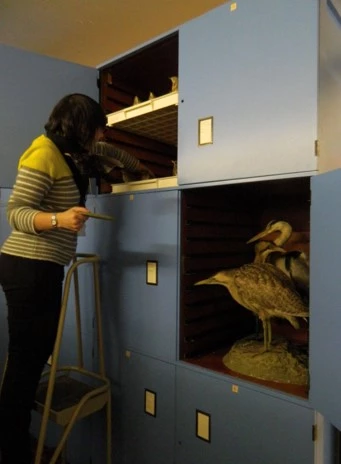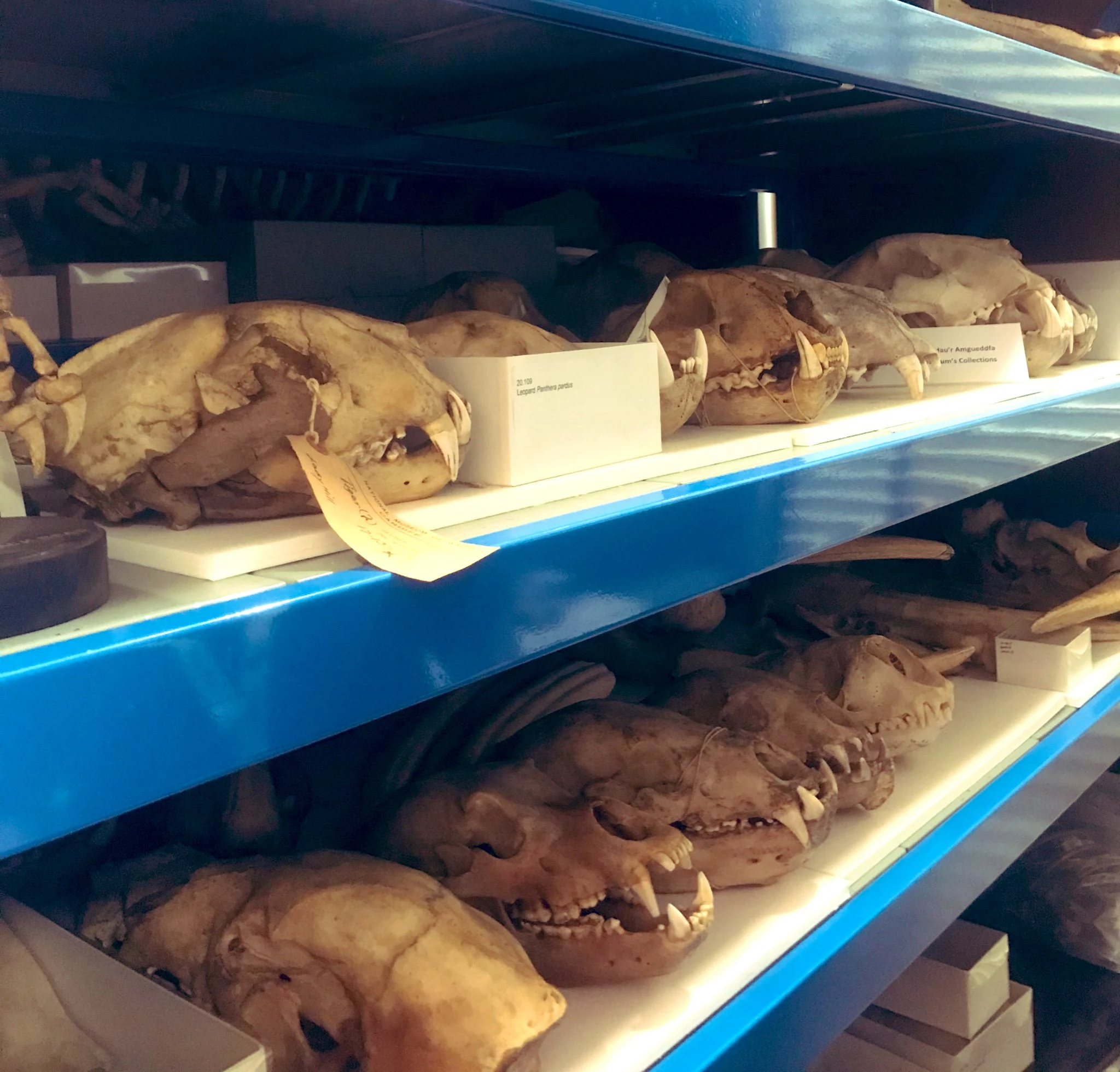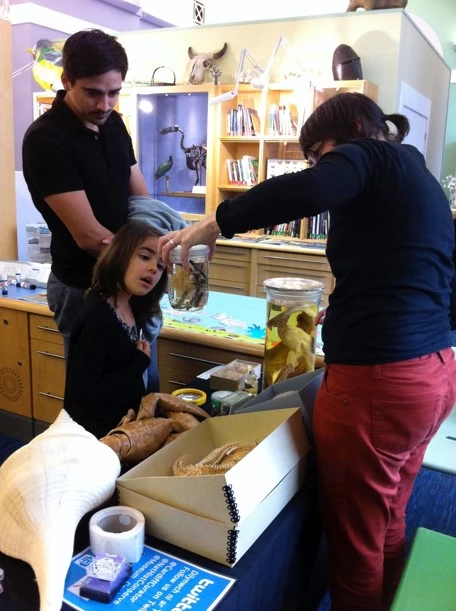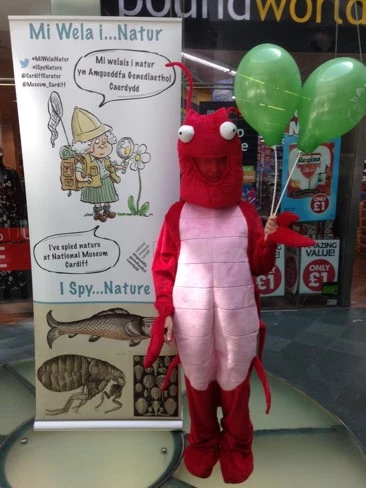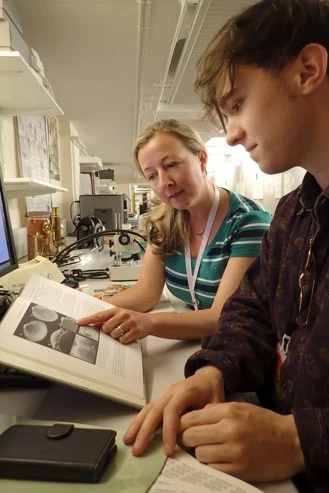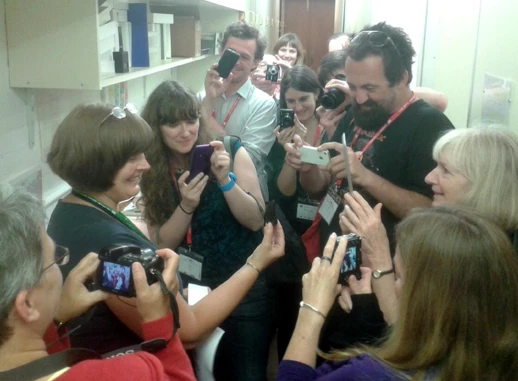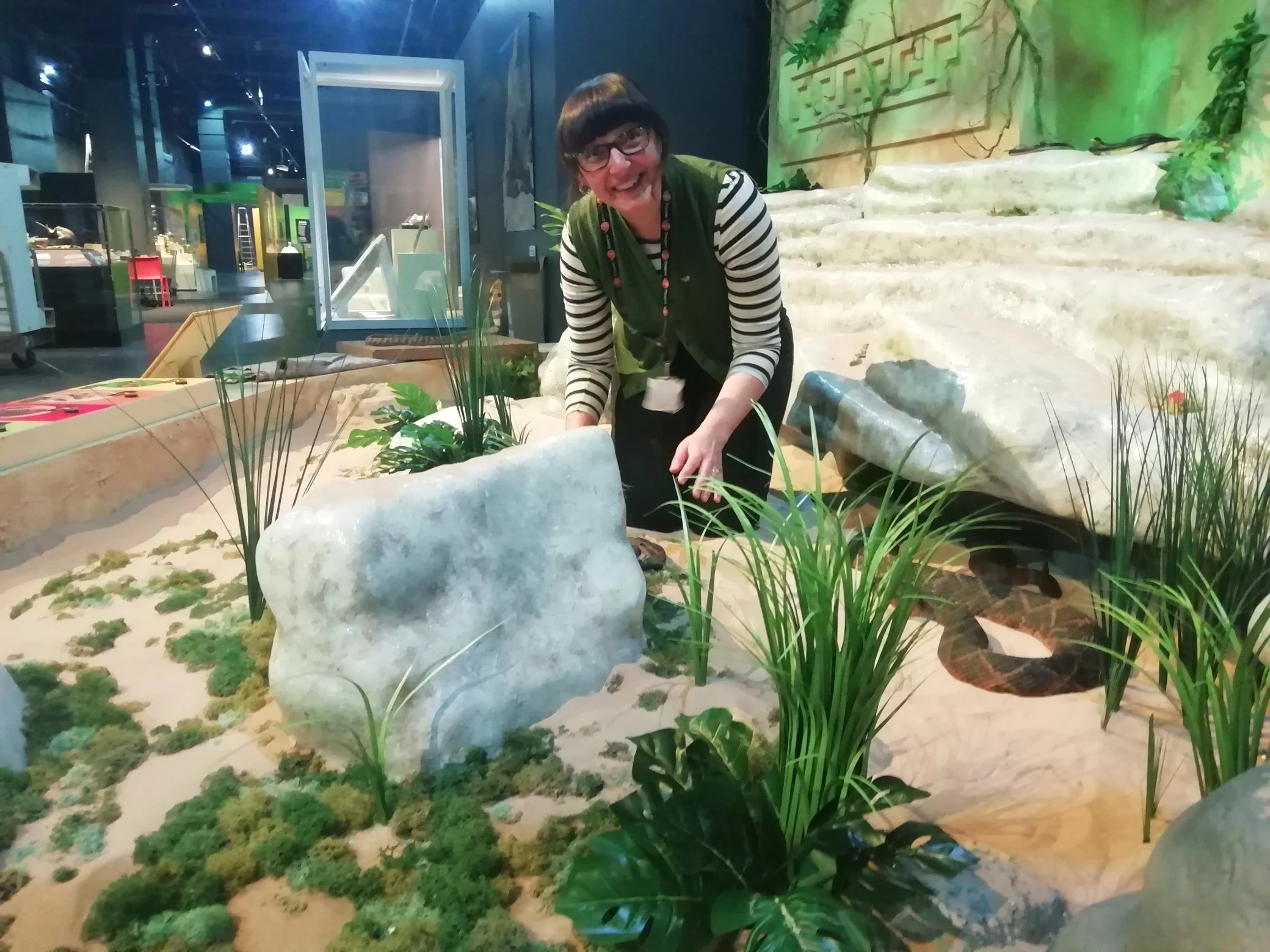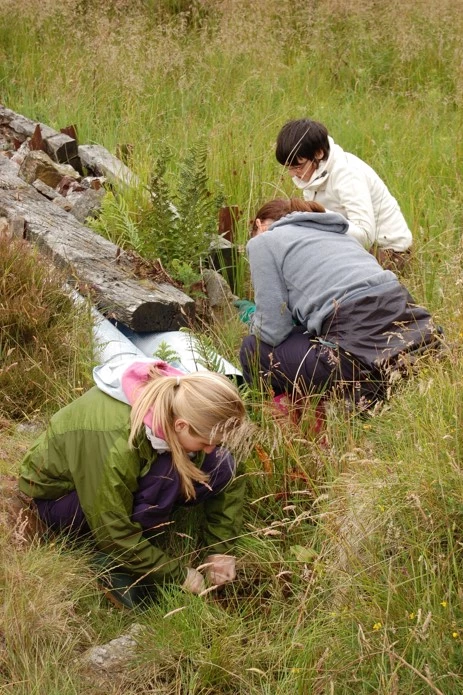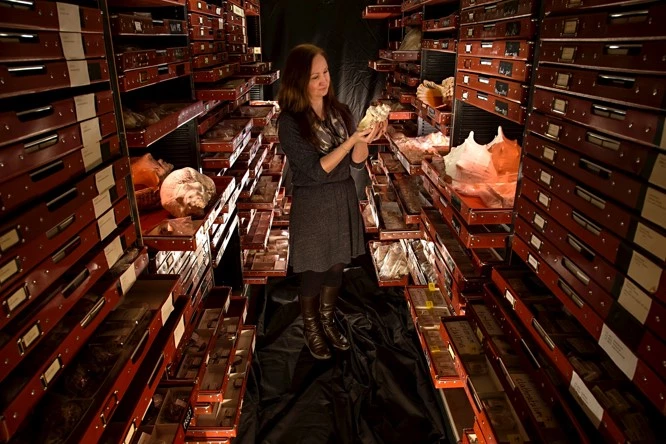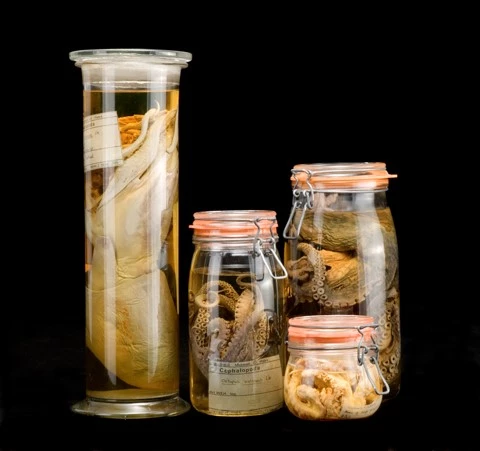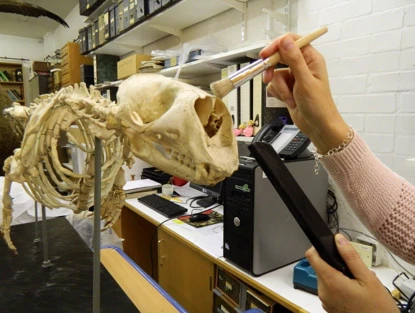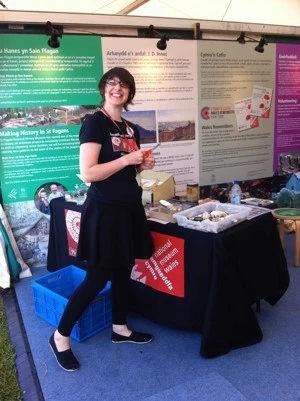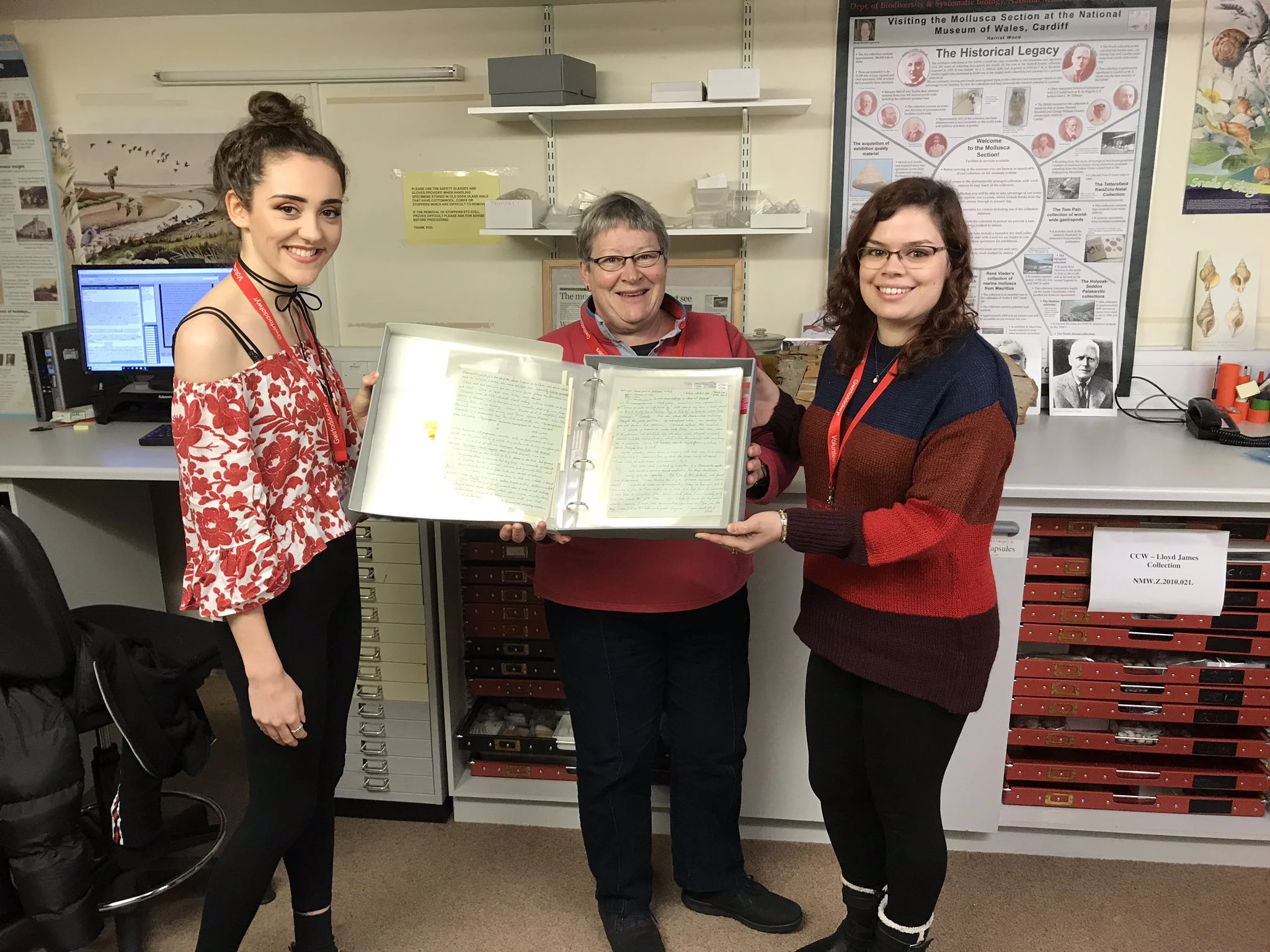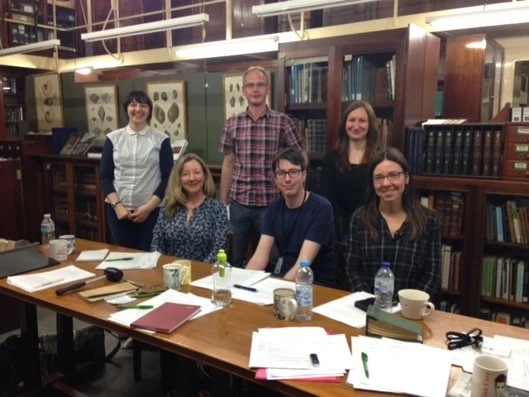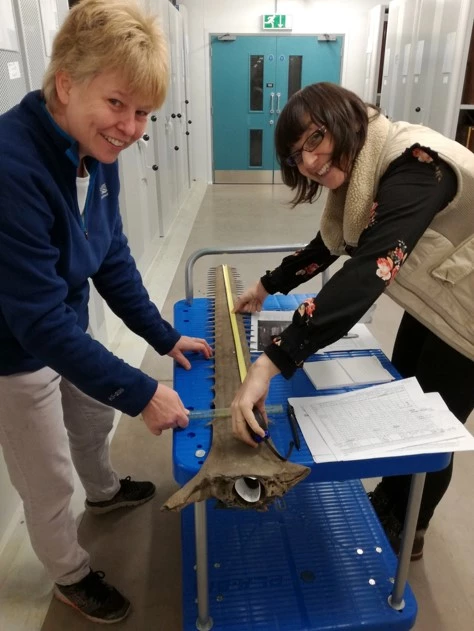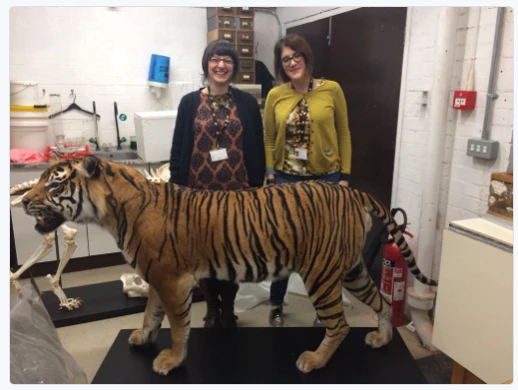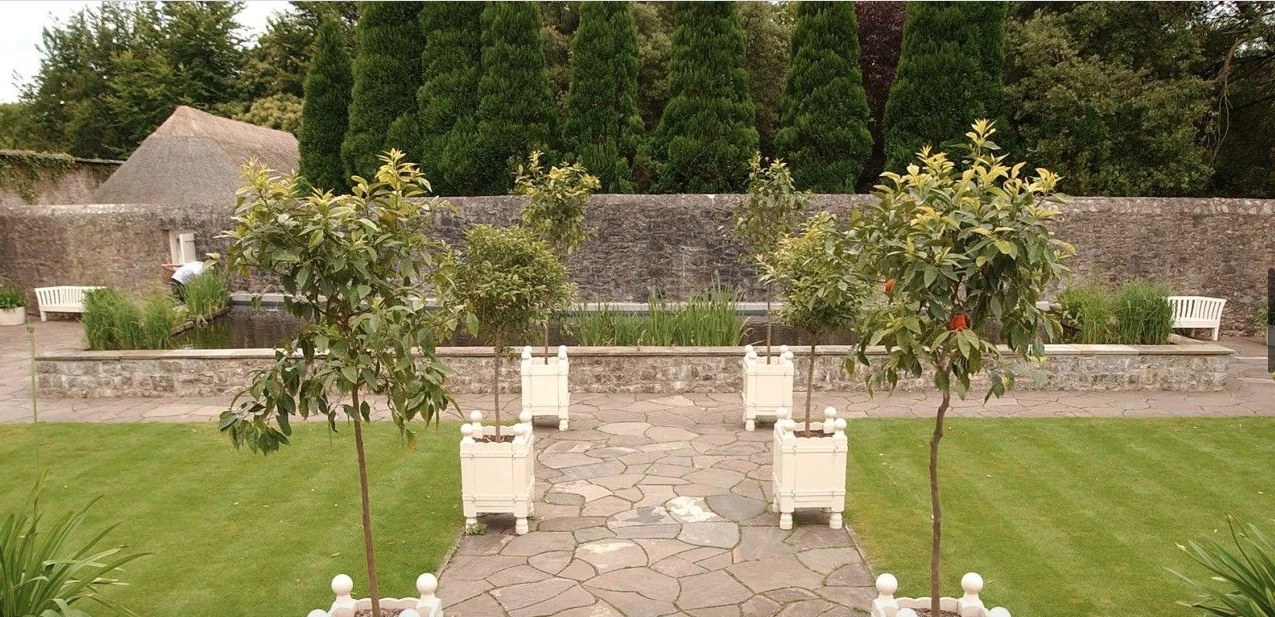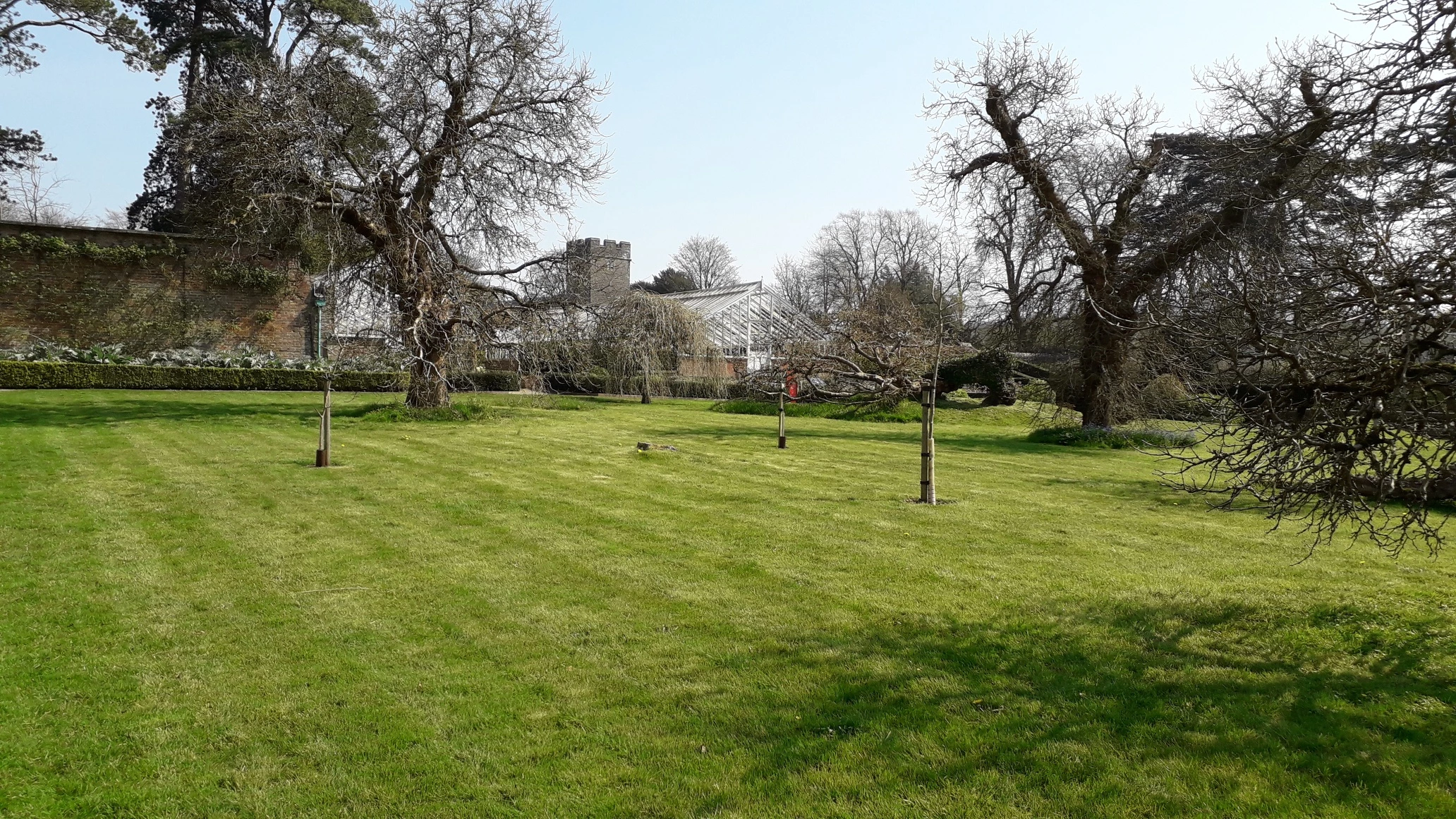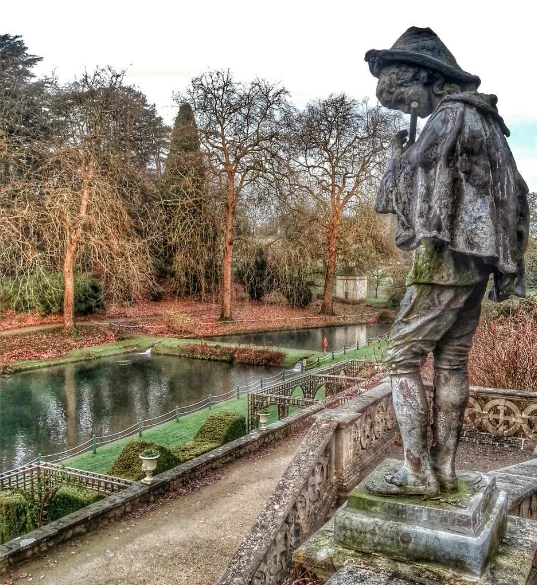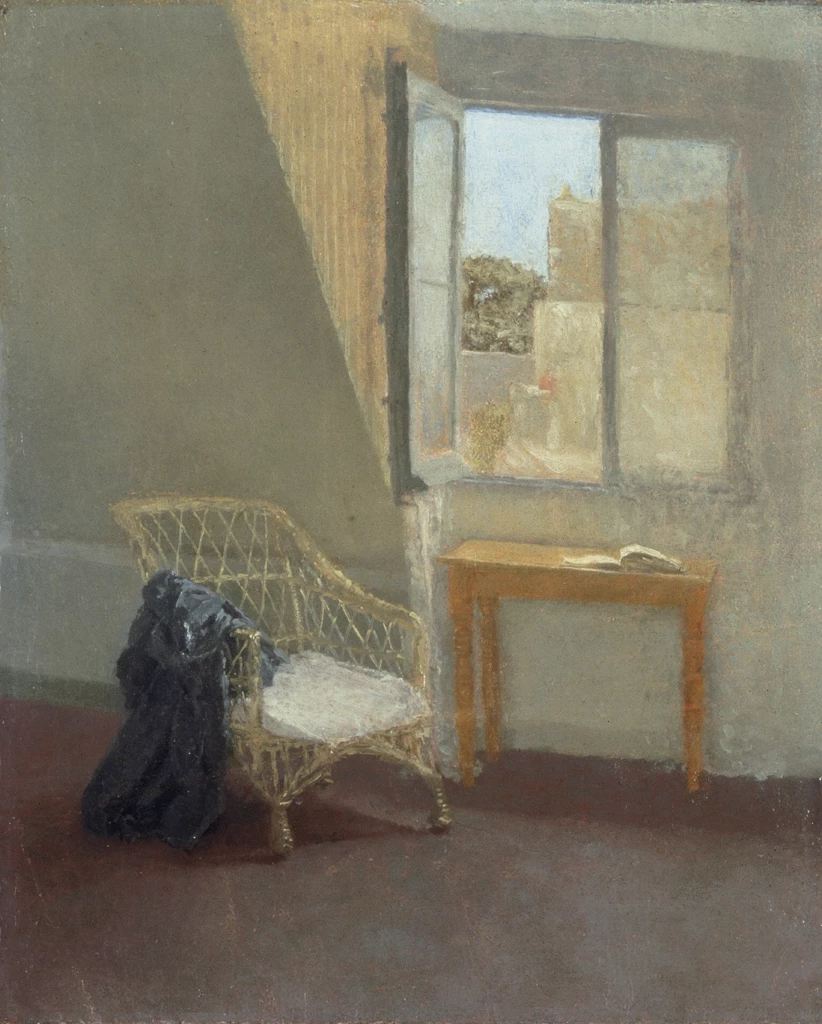A Day in the Life of a Natural History Curator
, 11 May 2020
A Day in the Life of a Natural History Curator
My name is Jennifer Gallichan and I am one of the natural history curators at National Museum Cardiff. I care for the Mollusc (i.e. snails, slugs, mussels, and octopus) and Vertebrate (things with backbones) collections. Just like everybody else, museum curators are adapting to working from home. But what did we use to do on a 'normal' day, before the days of lockdown?
Caring for the National Collections
Most of our specimens are not on display. Amgueddfa Cymru holds 3.5 million natural history specimens and the majority are held behind the scenes in stores. Caring for the collections is an important part of our role as curators. We have to meticulously catalogue the specimens to ensure that all of the specimens are accounted for. As you can imagine, finding one object amongst 3.5 million could take a while.
Harriet Wood (Curator: Mollusca) in the collections
Cephalopod specimens from the William Evans Hoyle collection
Cleaning the skeleton of one of Cardiff famous residents, Billy the Seal
We spend a lot of time working with you, our fantastic visitors. Much of our time is spent answering the thousands of enquiries we receive every year from families, school children, amateur scientists, academics of all kinds, journalists and many more. We also host open days and national events throughout the year which are another great opportunity to share the collections. Many of us are STEM (Science, Technology Engineering & Mathematics) ambassadors, so an important part of our role inspiring and engaging the next generation of scientists.
Talking about the collections at the Eisteddfod
Our museums are crammed full of fascinating objects and interesting projects to inspire and enjoy. We spend a lot of time with our excellent volunteers, helping them to catalogue and conserve the collections, guiding them through the often intricate and tricky jobs that it has taken us decades to perfect.
Our fantastic volunteers currently working on transcribing letters from the Tomlin archive of correspondence
Museums across the world are connected by a huge network of curators. We oversee loans of specimens to all parts of the globe so that we can share and learn from each other’s collections. We have to be ready to deal with all manner of tricky scenarios such as organising safe transport of a scientifically valuable shell, or packing up and transporting a full sized Bison for exhibition.
A meeting of mollusc curators as part of a research project at the Natural History Museum, London
Despite the fact that a large part of the collections are behind the scenes, they are open to visitors. Researchers from across the globe come to access our fantastic collections to help with their studies. We also host tours of the collections on request.
Working with visitors in the collection, examining Sawfish rostra
Despite having millions of specimens, museum collections are not static and continue to grow every year. Be it an old egg collection found in an attic, or a prize sawfish bill that has been in the family for generations, it’s an important part of a curator’s job to inspect and assess each and every object that we are offered. Is it a scientifically important collection or rare? Has it been collected legally? Do we know where and when it was collected? Is it in a good condition? Do we have the space?
Bryn, our Sumatran Tiger was donated to us in 2017 from Colwyn Bay Mountain Zoo
A fun part of the job is working with our brilliant Exhibitions department to develop and install new exhibitions. We want museums to be exciting and inspiring places for everyone so we spend a lot of time making sure that the information and specimens we exhibit are fun, engaging, inspiring and thought provoking.
Adding specimens to a specially created exhibit called Museum in a House, for Made in Roath festival, 2015
Last but definitely not least, when we aren’t doing all of the above, we are doing actual science. Museums are places of learning for visitors and staff alike. Many of us are experts in our field and undertake internationally-recognised research. This research might find us observing or collecting specimens out in the field, sorting and identifying back in the lab, describing new species or researching the millions of specimens already in the collections.
Kate Mortimer-Jones (Senior Curator: Marine Invertebrates) hard at work identifying marine worms
Despite lockdown, we are working hard to keep the collections accessible. We’re answering queries, engaging with people online, writing research papers and chipping away at collection jobs from home. And like all of you, we are very much looking forward to when the museum opens its doors once again.
If you want to find out more about the things we get up to in the museum, why not check us out on Twitter or follow our blog? You can also find out more about all of the members of the Natural Sciences department here.
